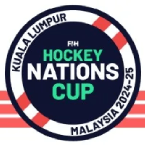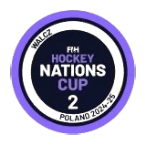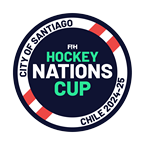
Until four years ago the The Hockey Museum in England was a small, diverse collection housed firstly in two rooms at the National Hockey Stadium at Milton Keynes and subsequently in its founder’s garage in Surrey. Mike Smith, the current curator and one of the trustees of The Hockey Museum, explains how the museum came about.
“Phil Appleyard, the president of England Hockey in the 1980s wanted a display. So myself and David Wareham teamed up to put something together. It was just displays really, posters, equipment, clothing. It was in two rooms at the National Stadium. When that closed down, some of the stuff was lost but the majority was stored in my garage, where I thought it would stay, forever.”
It was not until London won the Olympic bid in 2007 that thoughts began to turn towards the heritage of sport in the UK, and it was through a chance encounter between Smith and an official from Woking Borough Council that the idea of a permanent collection began to develop.
Woking Borough Council wanted a display to coincide with the Olympics; Smith wanted a space to house and expand the collection and so a perfect match was made. The Borough Council provided a building and Smith and a small but enthusiastic band of volunteers moved in.
“David (Wareham) and myself were joined by Pat Rowley [a well-known hockey journalist] and Dil Bahra, who were both passionate about the history of hockey. Then I heard Katie Dodd give a talk on the history of hockey at the 2010 Champions Trophy in Nottingham and I knew she was just who we needed on board, so she joined us, as board chairperson. We also had Ian Wilson, a representative from England Hockey, on board as well.”
It took a year for Woking’s initial offer to the Museum to be formalised, but once they had the space, the group set to work. They asked friends, family and hockey colleagues to spread the word and soon the hockey collections began pouring in.
The newly-opened Hockey Museum was soon crammed to the rafters with equipment, magazines, coaching manuals, rule books, programmes, clothing and a raft of other hockey-related items.
“What you see in this museum, virtually everything before you, we have been given or we have found it,” says Smith. “It has cost us no money at all. That is how we started five years ago. We had 56 collections in 2012, 80 in 2013, this year we are hitting four collections a week, around 200 a year. Will it keep going like that? It might plateau, or we might get even more collections.”
Within 18 months it was clear the initial premises were not fit for purpose. The Borough Council helped once more, providing a new premises with a temperature-controlled store room, something that was essential given the fragility of some of the older items in the collection.
With some reclaimed school storage units and a heap of donated acid-free boxes, the collections now have a room of their own, although Smith thinks they will outgrow this space soon.
“We make a lot of noise for a little museum. Woking and Surrey cannot believe what we have achieved in four years,” says Smith. “Basically the council said to us ‘Show us that you are meaningful and we will help you’. Within a few months, Woking was popping up on news sites and websites in connection with the museum so the council was over the moon. We are developing a very positive relationships.”
These days the museum’s team of volunteer numbers more than 50 and the search has begun for a paid officer – a collection management officer, but for the first five years it really was a case of learning on the job.
The Hockey Museum joined the Surrey Museum Partnership so they could glean useful advice on running a museum, but as Smith said: “I am a curator who knows nothing about curation.”
The Museum plays host to a number of people who are researching the sport or sport in more general terms. Recently Janet Beverley, a former Australian international, spent several days at the museum researching for her book on the history of the Hockeyroos, and several books are either already published or in various stages of completion, based on the wealth of information contained within the wall-to-wall hockey memorabilia.
The Museum is currently in a stage of rapid expansion. Partnership with the International Hockey Federation (FIH) has brought both funding and international recognition, while the EuroHockey Championships in London earlier in the year brought The Hockey Museum to the wide public’s attention.
The museum is already going for accreditation – the gold standard of museums – and there are multiple plans for growth and development in the pipeline.
“The trustees look after the strategy, while the management look after the operational side. We have come from nothing to this in four years so we need to take stock. We are currently working out where we go next but this has been a steep but exciting learning curve,” said Smith who seems to employ just the right amount of pride in a job well done and caution about the direction of travel.
To find out more about The Hockey Museum, visit their website: hockeymuseum.net
Photo: The Welsh National Hockey team who took part in one of the first ever documented International Matches in 1895. Courtesy of Irish Hockey Archives























